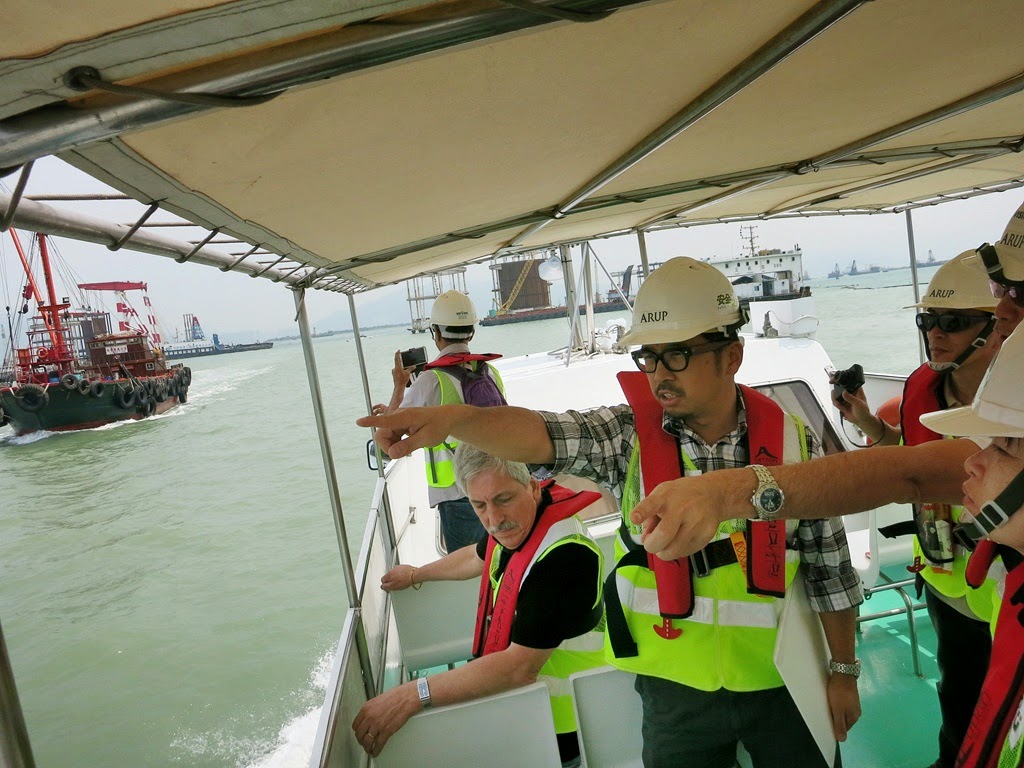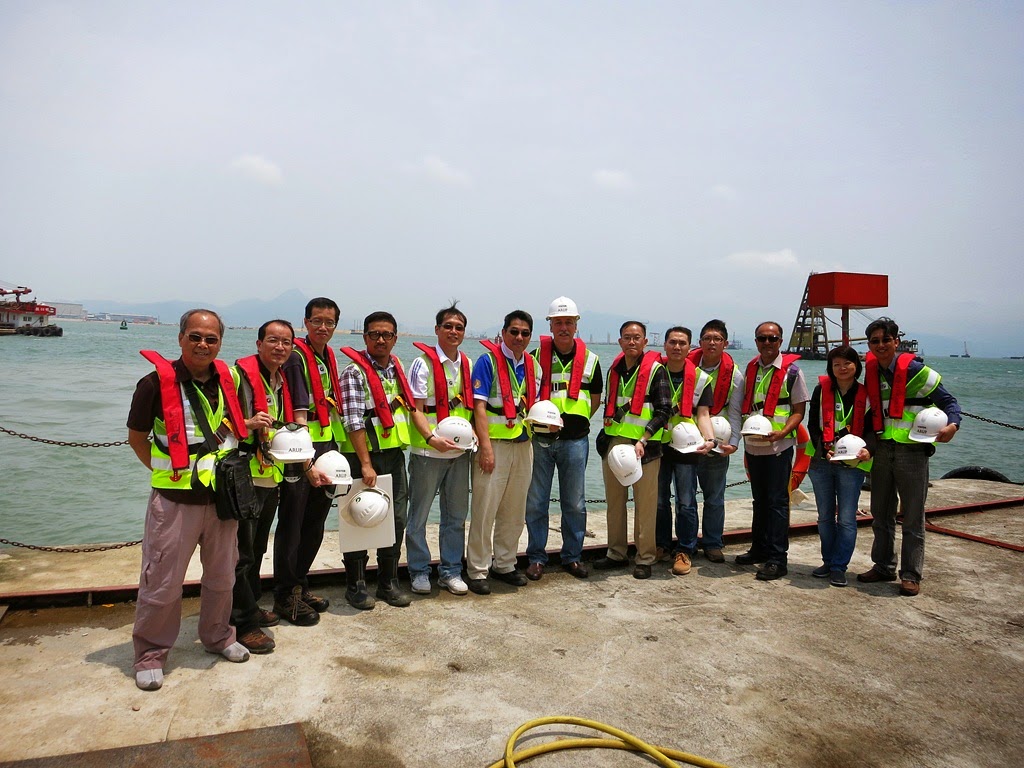Before site visit of the HKBC, Mr. Ben Poon (Senior Resident Engineer, ARUP) gave an overview briefing of HZMB project and the details of HKBCF project. “HZMB is the longest bridge-cum tunnel sea crossing and it supports the continuous economic growth in Pearl River Delta” Mr. Ben Poon said.
Connectivity of HZMB to major cities at Pearl River West was found reduce 80% of travel time. Originally, the distance from Zhuhai/Macao to HK Airport is over 200km with travel time about 4hrs. After implemented HZMB, the distance reduced to 42km with travel time about 45min.
(Photo of the Connectivity of HZMB at http://www.hzmb.hk/eng/img/overview/about_overview06_p02_d.jpg )
There were three related infrastructures within Hong Kong included Hong Kong Link Road (HKLR), HKBCF and Tuen Mun-Chek Lap Kok Link (TM-CLKL).
For TM-CLKL, reclamations adjacent to Tuen Mun River Trade Terminal and reclamation next to HKBCF for northern and southern tunnel landfalls and it is about 5km sub-sea tunnel.
(Photo of HKBCF at http://www.hzmb.hk/eng/img/benefits/benefits01_p03l.jpg )
Then Mr. Ben Poon explained the technical parts of HKBCF below.
For Non-dredge Seawall Scheme, its benefits included marine mud remained intact; eliminated dredging of marine deposits by 95% and avoided the need of marine dumping; reduced the suspended particles by 70% and minimize disturbance to marine ecology especially Chinese White Dolphin; as well as reduced the use of sandfill and marine traffic by 50%.
Construction of Stone Column and Typical Cellular Structures geometry was stated in which 85 main cells with 84 connecting arcs surrounding HKBCF.
Q&A Session.
Then Mr. Ben Poon showed the model of HKBCF and cellular structures processes.
Mr. Thomas Ma (Committee member of CQI and Manager, Assessment Conformity of HKQAA) represented CQI to present a souvenir to Mr. Ben Poon.
We went for Boat Trip to HKBCF construction site.
Minda and I took a photo for memory.
Mr. Ben Poon showed the different location and explained the reclamation processes.
1) Install Guide Piles
2) Install Guide Frame
3) Place Sheet Piles
4) Place Closing Piles
5) Drive Piles to Founding Level
6) Backfill the Steel Cell
7) Steel Cell Completed
The sand ship was from China which provided sand for filling the HKBCF.
Finally, we took a group photo for memory.
I would like to thank Mr. Leslie Lee (Secretary and Honorary Chairman, CQI-HK) who arranged this meaningful visit to us.
Reference:
CQI-HK - http://www.thecqi.org.hk/
HZMB Project – www.hzmb.hk
Then Mr. Ben Poon showed the model of HKBCF and cellular structures processes.
Mr. Thomas Ma (Committee member of CQI and Manager, Assessment Conformity of HKQAA) represented CQI to present a souvenir to Mr. Ben Poon.
We went for Boat Trip to HKBCF construction site.
Minda and I took a photo for memory.
Mr. Ben Poon showed the different location and explained the reclamation processes.
1) Install Guide Piles
2) Install Guide Frame
3) Place Sheet Piles
4) Place Closing Piles
5) Drive Piles to Founding Level
6) Backfill the Steel Cell
7) Steel Cell Completed
The sand ship was from China which provided sand for filling the HKBCF.
Finally, we took a group photo for memory.
I would like to thank Mr. Leslie Lee (Secretary and Honorary Chairman, CQI-HK) who arranged this meaningful visit to us.
Reference:
CQI-HK - http://www.thecqi.org.hk/
HZMB Project – www.hzmb.hk


















沒有留言:
發佈留言